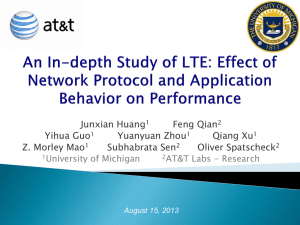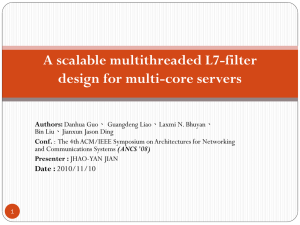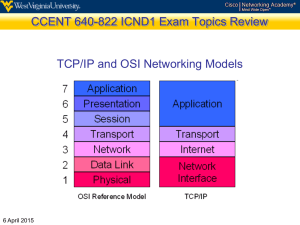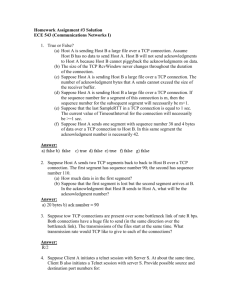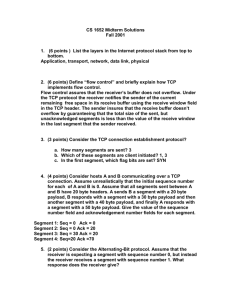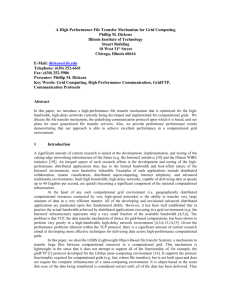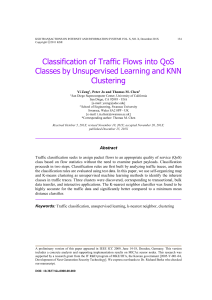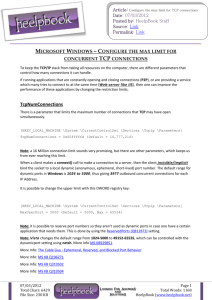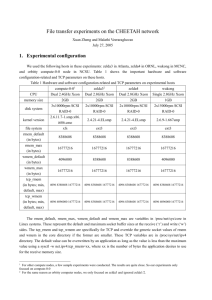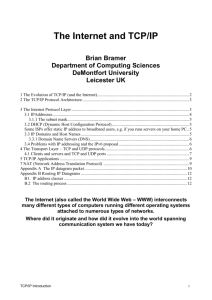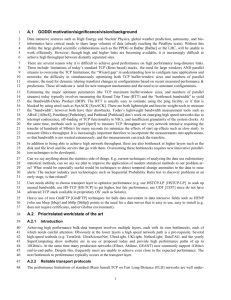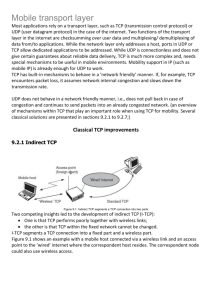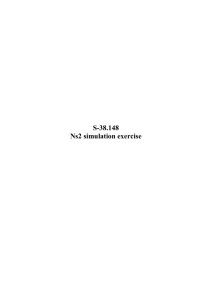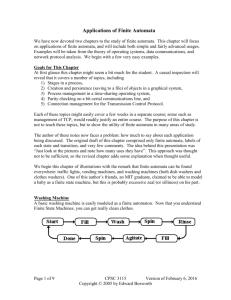Recommended TCP Simulation Parameters
advertisement
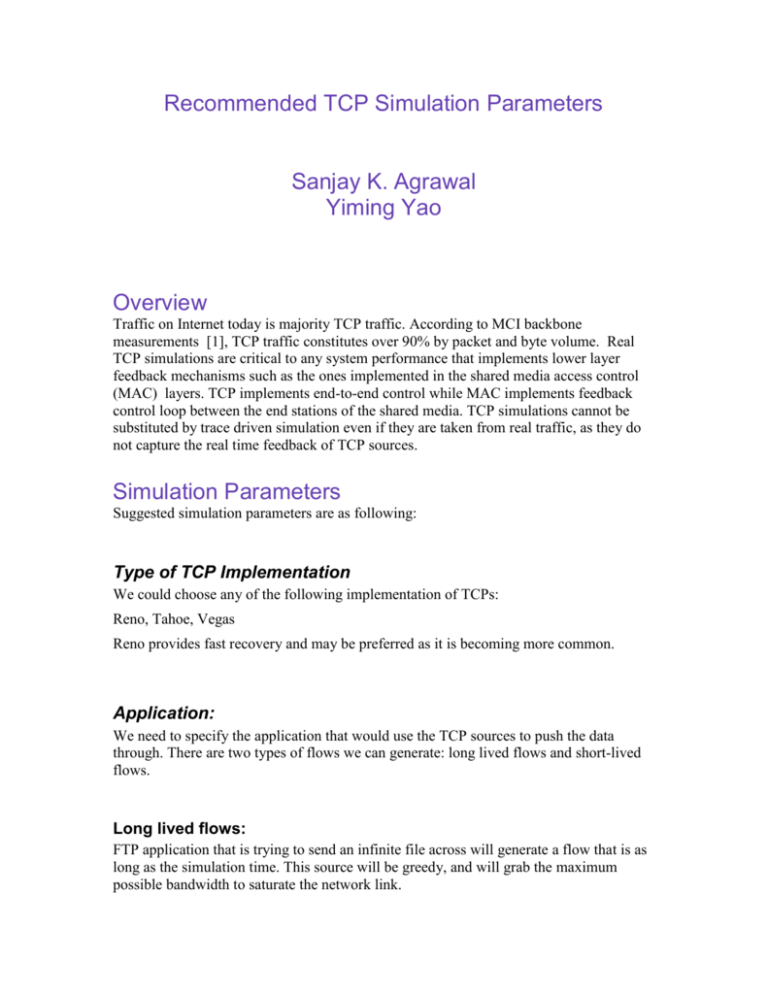
Recommended TCP Simulation Parameters Sanjay K. Agrawal Yiming Yao Overview Traffic on Internet today is majority TCP traffic. According to MCI backbone measurements [1], TCP traffic constitutes over 90% by packet and byte volume. Real TCP simulations are critical to any system performance that implements lower layer feedback mechanisms such as the ones implemented in the shared media access control (MAC) layers. TCP implements end-to-end control while MAC implements feedback control loop between the end stations of the shared media. TCP simulations cannot be substituted by trace driven simulation even if they are taken from real traffic, as they do not capture the real time feedback of TCP sources. Simulation Parameters Suggested simulation parameters are as following: Type of TCP Implementation We could choose any of the following implementation of TCPs: Reno, Tahoe, Vegas Reno provides fast recovery and may be preferred as it is becoming more common. Application: We need to specify the application that would use the TCP sources to push the data through. There are two types of flows we can generate: long lived flows and short-lived flows. Long lived flows: FTP application that is trying to send an infinite file across will generate a flow that is as long as the simulation time. This source will be greedy, and will grab the maximum possible bandwidth to saturate the network link. Short lived flows To emulate HTTP traffic, 60% of the real Internet traffic [1], we need to generate extremely short-lived flows arriving and departing dynamically. For the sake of simplicity we can use the Markovian process to emulate the HTTP traffic flow arrival and departure time. Exact parameters can be discussed in the next meeting. We can also use existing models for HTTP such as the one specified in OPNET, and NS2. For initial simulation we should focus on long lived flows as they are easier to generate. Packet Size: Packet sizes are variable on Internet. By packets, 60% packet are 64bytes, 20% are around 500bytes, and another 20% are 1536 bytes [1]. Average packet size is 500 bytes [1]. It is hard to generate multiple distributions in application specified simulations. Thus, we should use the average size packet for the sake of simplicity. Window Size: TCP dynamically varies the window size depending on the congestion. The max window size in Solaris TCP stack implementation is 64k bytes. In terms of average size packets (500bytes) it is 62 packets. Number of TCP sessions Number of TCP flows should be such that they fill up the available link. Number of TCP flows = Target BW * RTT/set TCP window size Simulation Time TCP flows increase the bandwidth only when they get acknowledgements. Acknowledgements are received after the round trip time (RTT) between the source and destination. It takes TCP flow few round trips before it can achieve the fair share of the link bandwidth. Thus simulations should run at least 100 (100 from my experience) times the time it takes to achieve the fair bandwidth (or the maximum bandwidth) of the network link. Least 100* (log2 (max window size))* flow RTT Where max window size = Link bandwidth * flow RTT/packetsize References [1] “The nature of the beast: recent traffic measurements from an Internet backbone,” K., Claffy, http://www.caida.org/outreach/papers/Inet98/







